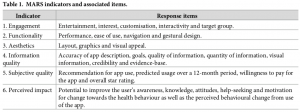Over the past few weeks, I’ve researched perspectives and studies that highlight the use of telepractice as a form of speech and language intervention and service for children in rural or remote communities. As we draw near the end of this course, I was also curious to explore the research behind computer-assisted speech intervention (e.g. computer programs or software) as part of intervention and service provision for students living in remote or rural areas. Overall, it is clear that face-to-face intervention is the primary method of service provision, however with the lack of specialists to provide these services, educators must advocate for other supports and interventions to support their students.
Speech sound disorders can heavily impact children’s everyday lives and therefore, early and evidence-based intervention is required in order to support every-day functioning for these children. Crowe et al. (2017) stated that although speech and language pathologists are fundamental in providing intervention, it is also important to utilize others in children’s lives. The article by Crowe et al. (2017) indicated that educators are important people to consider to provide supplemental intervention since they are a significant part of a child’s life and may provide support for identified gaps in service provision. However, one of the barriers to providing this service is the limitation of time. Therefore, Crowe et al. (2017) explained in their study that computer-based intervention programs have potential to delivery effective intervention with a consultative model with a SLP where an educator can support less complex interventions/service for speech and language challenges.
The study by Crowe et al. (2017) examined the effectiveness of the computer-assisted invention program called Phoneme Factory Sound Sorter (PFSS, an Australian/British program). This study by Crowe et al. (2017) indicated that the program was no more effective than face-to-face intervention, but that there were three factors that influenced the provision of support; personal factors (relationships with children, educators, peers), environmental factors (philosophies, physical environment, logistics), and program factors (specifically to PFSS). Even though this study evaluated the effectiveness and factors of an Australian/British program, I believe that the factors are universal. Therefore, I think that using computer-assisted speech intervention may be as effective as face-to-face intervention for speech sound support, as indicated in the study by Crowe et al. (2017), however the challenges lies in determining what programs/software to use with students and the knowledge/expertise of educators.

Photo by pan xiaozhen on Unsplash
Researchers Furlong et al. (2018) published an article that describes their evaluation of mobile apps to support speech disorders with children from the Apple iTunes store and Google Play. They began their research by culminating a list of apps from the Apple iTunes store and Google Play between November 2017 and May 2018 by searching “speech, speech therapy, speech pathology, artic, articulation, speak, chat, say, talk, pronunciation, phonological, phonology” (p. 3, 2018). These search terms were shared in consultation with the researchers by speech and language pathologists, health academics, and app specialists. The search returned 5076 titles total, with 2784 from Google Play and 2292 from the Apple iTunes store (Furlong et al., 2018). From this initial search, non-English titles and duplicates were removed, resulting in a combined total of 4033 app titles. Next, researchers completed a broad screening of the apps and included apps that required production of speech by the user, were designed for English speakers, and were suitable for children up to 12 years old with speech disorders (Furlong et al., 2018). Apps were excluded if they were for second language learners, taught a foreign language, speech to text/text to speech apps, and apps that focused only on assessment. This screening eliminated 3496 apps, leaving only 537 for further review (Furlong et al., 2018).
Phase two was a focused screening that analyzed the marketing description of the apps, using the same inclusion and exclusion criteria as the phase one broad screening. This screening resulted in a remaining 259 apps. Next, the remaining apps were examined by Furlong et al. using a quality appraisal, evaluated by using the Mobile Application Rating Scale (MARS). MARS evaluates apps using a 5-point scale across 6 indicators; engagement, functionality, aesthetics, information quality, subjective quality, and perceived impact (Furlong et al., 2018).

Table 1: MARS indicators and associated items. Furlong et al., 2018.
The 234 apps that qualified using the quality appraisal were then each trialled for 10 minutes each. Overall, functionality scored the highest across all apps, followed by aesthetics and information, then engagement (Furlong et al., 2018). Finally, the MARS scores for each app were calculated to determine the highest scoring apps for supporting students with speech disorders, with apps from the Apple iTunes store scoring highest across functionality, aesthetics, and information.
- Articulation Station Pro ($84.99 – Apple iTunes store)
- Apraxia RainbowBee ($26.99 – Apple iTunes store)
- Articulation Scenes ($47.99 – Apple iTunes store)
- Speech with Milo Articulation Board Game Pro ($23.99 – Apple iTunes store)
- Articulate it! Pro ($64.99 – Apple iTunes store)

Photo by Diego Passadori on Unsplash
The look into the use of computer-assisted intervention and apps for support and service for speech and language challenges has been something I’ve been actively pursuing in my current practice. In my multi-aged setting, I find that the diversity in need for my students’ speech and language supports are something that I haven’t yet settled into. With such a wide range of need and limited training myself, I am always looking for ways that I can increase opportunities for skills practice and therapy service. In addition, my students’ needs are not just focused on articulation and speech sounds, they also have challenges with pragmatics and syntax. For these challenges, creating oral and digital stories using ComicLife and BookCreator have supported this development and are currently apps that I have access to through my school district. On our school iPads you must place an OS ticket/request to have apps placed onto devices – which can sometimes take a few weeks to come into place… or sometimes they may be refused. Therefore, understanding and having some evaluative criteria to support requests for new apps is extremely beneficial in advocating for ways to support student learning.
References:
Crowe, K., Cumming, T., McCormack, J., Baker, E., McLeod, S., Wren, Y., . . . Masso, S. (2017). Educators’ perspectives on facilitating computer-assisted speech intervention in early childhood settings. Child Language Teaching and Therapy, 33(3), 267-285.
Furlong, L., Morris, M., Serry, T., & Erickson, S. (2018). Mobile apps for treatment of speech disorders in children: An evidence-based analysis of quality and efficacy. PloS One, 13(8)

November 4, 2019 at 6:27 am
Well written Megan, you found some great articles this week! That is the same with my District, if you want to buy a new app it goes through the school District. I think you have some great research and info to advocate for some of the apps you would like to use!